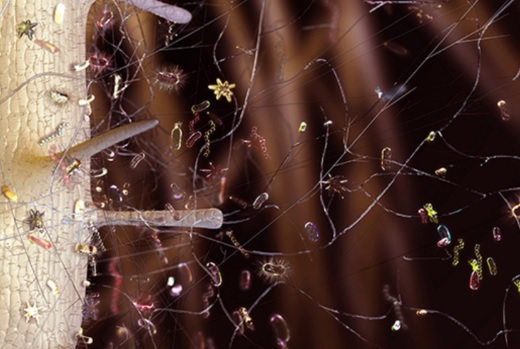
A plant's roots interact with the diverse microbes inhabiting its neighborhood -- the rhizosphere, illustrated here by a model. The soil surrounding plant roots teems with microorganisms that are both helpful and hostile. To better understand these connections, researchers are investigating how root metabolism determines the chemical signals roots emit and the subsequent effect on soil microbes and, ultimately, on plant health and production. The creation of new biological tools will permit the researchers to use their findings to modify plant genomes specifically targeting traits such as drought resistance and yield.
A plant's roots interact with the diverse microbes inhabiting its neighborhood -- the rhizosphere, illustrated here by a model. The soil surrounding plant roots teems with microorganisms that are both helpful and hostile. To better understand these connections, researchers are investigating how root metabolism determines the chemical signals roots emit and the subsequent effect on soil microbes and, ultimately, on plant health and production. The creation of new biological tools will permit the researchers to use their findings to modify plant genomes specifically targeting traits such as drought resistance and yield.
Image credit: Joel Brehm/Office of Research and Economic Development, University of Nebraska-Lincoln
https://news.science360.gov/obj/pic-day/c041fa51-94e9-48d5-a2b6-40623af3db2e/howdy-neighbor